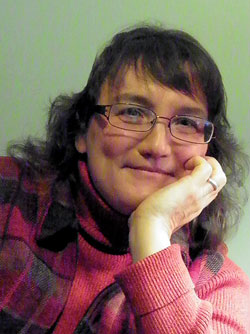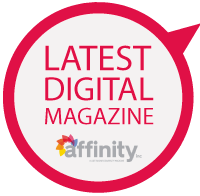
Q&A with Diversity and Inclusion Consultant Leah Kyaio
INTERVIEW WITH LEAH KYAIO
Leah Kyaio has been a diversity and inclusion professional for more than 20 years and has provided consulting and professional development services for the Washington, Ohio, Michigan and Indiana State Departments of Education; Americorp; YWCA Chapters; and numerous private and public schools. Leah provides the tools, strategies, and mindsets needed to reduce and eliminate racism and sexism in the workplace. She holds formal degrees in psychology and education. We sat down with Leah to benchmark the future of ERG’s and BRG’s in the corporate arena.
“In the big picture, we’re trying to create workplaces that are equitable and fair to all diversities.”
WHAT ARE THE MOST COMMON TYPICALLY MARGINALIZED POPULATIONS HIGHLIGHTED BY AFFINITY GROUPS WITH EMPLOYEE RESOURCE GROUPS (ERGS) AND BUSINESS RESOURCE GROUPS (BRGS)?

Leah Kyaio
All of these groups deepen segmentation. It’s as if we are developing more file folders in which to sort people. Think of the recent explosion in the LGBTQ community with new identifier vocabulary for sexual orientation, expression, and preferences. It you’re not front and center in the LGBTQ community, it’s easy to get confused by the changing terminology. This ever-changing vocabulary provides more and more labels for LGBTQ people.
This reflects one of my concerns related to affinity groups. It is challenging to take a single layer view of diversity. We are all made up of a variety of file folders. I can be part of the LGBTQ community, a person of color. I may or may not experience a disability and/or have military experience. Using a single lens to further segment any one of those identities may not be helpful.
THE CONCEPT OF AN AFFINITY GROUP WAS FIRST BROUGHT TO THE UNITED STATES SOME TIME IN THE LATE 1960’S. THAT’S MORE THAN 50 YEARS AGO. HOW HAVE THEY EVOLVED SINCE THEN?
Back in the 1960s, affinity groups started out as caucuses, most commonly white caucuses and caucuses of color. As they evolved they became known as affinity groups and expanded to include other diversity identities. Over time, maturity and vocabulary expanded and ERGs and BRGs were born.
ERGs and BRGs are considerably different in the direction of their evolution and the expected outcomes. Using both groups effectively requires an understanding of exactly what it is they do.
Affinity groups were often informal groups of self-appointed employees. ERGs are affinity groups grown up. They have the blessing of Human Resources (HR) and the executive team. These two factors ensure a higher level of integration of ERGs into the organization. HR often uses ERGs to accomplish their hiring and retention mandates. Consequently, mentoring is formalized and, when well-run, the ERGs provide talent development for emerging leaders. ERGs are also an effective tool to reduce turnover in demographics identified as high risk for leaving the organization.
On the other hand, BRGs are ERGs grown up. They not only have the blessing of HR and executive leadership, they are also directly integrated into the strategic business plan of the organization. As such, BRGs are driven by a business plan that fits into the organization’s overall strategic plan. This ensures the goals of the BRGs mirror those of the organization. As a result, they provide, not just recruiting and retention solutions, but also business development outcomes and, to the degree to which the driving plans allow and outline, can serve to increase the equity within the organization.
I’VE NOTICED THAT MANY COMPANIES USE DIFFERENT NAMES FOR THEIR AFFINITY GROUPS BUT THEY ALL SEEM TO HAVE SIMILAR OBJECTIVES. WHAT IS THE PRIMARY OBJECTIVE FOR THESE DIVERSITY GROUPS?
“In the big picture, we’re trying to create workplaces that are equitable and fair to all diversities. Another challenge, however, is that ERGs and BRGs are following an homogenous group model. We have a fair amount of research that this model seldom succeeds in true equitable integration unless there is a non-homogenous component built into the evolution and strategic plan of the organizational structure. It’s the idea of creating BRGs to be a tool of equitable integration, not just another attempt that goes sideways as “separate but equal.” I have seen models where there is a ‘BRG collaborative’ monthly or quarterly, where all the homogenous BRGs from the organization come together to make sure they are working for full organizational integration. I have also seen an overall BRG that is not one group specific with committees that are homogenous that report back to the BRG.”
IS THERE A WAY WE CAN ASSESS WHETHER AN ORGANIZATION IS USING THEIR BRGS/ERGS FOR TRUE ADVANCEMENT OF DIVERSITY OUTCOMES?
Yes, there are several questions we can ask to determine that. First, is there data that supports the formation of ERGs/BRGs in the organization? Unfortunately, there’s a lot more assumption than data with many companies. HR statistics may indicate there is a high turnover in people of color throughout the organization, or that women who enter the IT department are employed for shorter durations than their male counterparts. Recognize, however, that the quality of data is only as good as the gathering of it. If the organization lacks a history in gathering such data, then waiting for that data to validate creating an ERG or BRG may not be the best practice. If a particular organization suddenly discovers that their female programmers remain employed for half the duration as their male programmers, then it’s better to act on that than to wait for a formalized study.
Second, what metrics are being used to identify and monitor the success of the ERGs/BRGs in meeting their outcomes and those of the organization? While this includes HR data (retention, EOE, etc) , there may be other performance appraisal metrics that can be linked and explored such as attendance, discipline, promotion, business development, growth, and initiatives.
“If an employee leaves and makes a lateral move to a new company, then there could be a level of dissatisfaction from the employee and he/she is seeking a more inclusive environment. For this reason, thorough exit interviews are important to this data-gathering initiative.”
WHAT CAN EXECUTIVE MANAGEMENT AND LEADERSHIP WITHIN AN ORGANIZATION DO TO SUPPORT ERGS/BRGS?
There are few initiatives within any organization that will thrive without executive management support but encouragement of such support may not be enough. It may require formalization through goals and/or expectations built into the strategic plan. The indicators would be in the form of executive recommendation of individuals to participate, ensuring ample time is allocated for participation, and offering personal investment in the form of mentoring, coaching or leadership opportunities. Without directly involving leadership on the executive level with the program, it isn’t going to be effective. BRG’s are often a springboard for mentoring programs and that’s the best of all possible worlds for inclusion.
WHY IS MENTORING BETTER?
It’s a one-on-one relationship. It’s a skill exchange. I equate it to the difference between being coached as a team and coached individually. With mentoring, the relationship is up close and personal and can bring about true change.
HOW CAN AN ORGANIZATION ENSURE THAT THEIR ERGS/ BRGS CONTRIBUTE TO THEIR BUSINESS GOALS?
One would expect a formal business or strategic plan for each particular demographic that integrates into the organization’s overall business and strategic plans. This ensures that the outcomes are mutually beneficial and truly advance diversity throughout the organization. You’d be amazed at how often I ask for data only to discover that companies don’t have anything that reflects employee duration and participation.
HOW DOES DURATION OF EMPLOYMENT CONVEY INCLUSION?
There are many performance appraisal metrics that can be linked and explored such as attendance, discipline, promotion, business development, growth and initiatives. By examining duration of employment and using exit interviews to gauge where they go after their employment is a key indicator. If an employee leaves and makes a lateral move to a new company, then there could be a level of dissatisfaction from the employee and he/she is seeking a more inclusive environment. For this reason, thorough exit interviews are important to this data-gathering initiative.
WHAT ABOUT THE BIG PICTURE? HOW CAN WE KNOW IF ERGS AND BRGS ARE TRULY EFFECTIVE AND NOT JUST SMOKE AND MIRRORS WITHOUT MAKING MEANINGFUL CHANGE?
It’s through the examination and understanding of the purpose of each unique ERG and BRG that we begin to see their place within an organization. It’s in the quality of the answers of the above-posed questions that the intent and success of these groups as change agents becomes clear from within an organization. It’s all about intent, priority and follow-through.




Leave A Comment